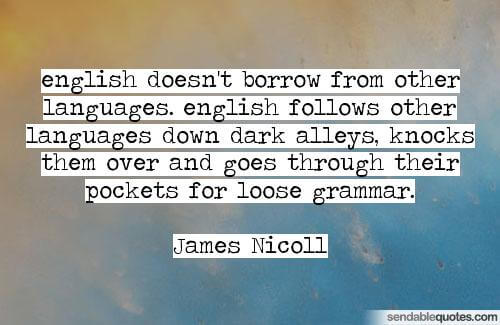Learning English with ChatGPT
Learning English with ChatGPT Love it or hate it, AI is here to stay. A lot of folks are talking about ChatGPT and if you haven’t been living under...
Flexible group courses for everyday communication and fluency.
Academic EnglishPrepare for university study with advanced academic language skills.
Business EnglishEnglish for professional communication in corporate and workplace settings.
Private LessonsOne-to-one lessons tailored to your goals, schedule and interests.
Language ExcursionsLearn English while exploring Cape Town with your teacher as your guide.
Get the score you need with targeted strategies and expert support.
Cambridge ExamsPrepare for the FCE or CAE with structured, high-quality training.
TOEFL PreparationBuild confidence and test skills to succeed in the TOEFL exam.
Personalised one-to-one English lessons delivered online, on your schedule.
Corporate GroupsLive online training for teams, customised to your organisation’s needs.
English for Tech ProfessionalsSelf-paced English course designed for developers, engineers, and IT teams.
Qualify to teach English in South Africa or abroad with this practical course.
Blended Certificate in TEFLCombine online study with hands-on classroom experience in Cape Town.
Learn in a historic university campus right in the city centre.
Tours and ActivitiesExplore Cape Town and make friends through weekly excursions.
Social ProgrammeJoin our schedule of fun events, outings and conversations.
Getting AroundTips and tools for navigating the city like a local.
Social and DigitalStay connected online and through our vibrant student community.
A friendly, sociable student house just a short walk from school.
Adderley StudiosModern, secure apartments in the heart of Cape Town.
HomestayLive with a local family and experience South African culture.
Hotels & AparthotelsIndependent options for comfort, privacy and flexibility.
All tuition and accommodation fees in one clear table.
Booking InformationWhat to expect before, during and after you book.
Instalment PlansFlexible payment options for long-term bookings.
User LoginView your bookings, make payments, and manage your details.
Visa options and support for international students coming to South Africa.
Insurance & TravelWhat you need to know about travel, insurance and staying safe.
MyELC AppAccess your timetable, progress and more on the student app.
Arrival and OrientationHow we help you settle in on your first day in Cape Town.
How to request certificates, transcripts, or proof of enrolment.
Terms & ConditionsThe small print — bookings, cancellations, and more.
Contact UsGet in touch with the ELC team by email, phone or WhatsApp.
Privacy PolicyHow we protect your data and respect your privacy.
What makes ELC and UCT a great place to learn English.
About the University of Cape TownSouth Africa’s leading university and home to the ELC.
About the English Language CentreWho we are, what we offer, and how we teach.
Our TeamMeet the teachers, support staff and leadership team behind ELC.
Our international quality standards and endorsements.
Media & PressNews coverage, interviews and media mentions of ELC.
TestimonialsWhat our students, partners and teachers say about us.
BlogUpdates, stories and insights from the ELC community.
Flexible group courses for everyday communication and fluency.
Prepare for university study with advanced academic language skills.
English for professional communication in corporate and workplace settings.
One-to-one lessons tailored to your goals, schedule and interests.
Learn English while exploring Cape Town with your teacher as your guide.
Get the score you need with targeted strategies and expert support.
Prepare for the FCE or CAE with structured, high-quality training.
Build confidence and test skills to succeed in the TOEFL exam.
Personalised one-to-one English lessons delivered online, on your schedule.
Live online training for teams, customised to your organisation’s needs.
English for Tech Professionals
Self-paced English course designed for developers, engineers, and IT teams.
Qualify to teach English in South Africa or abroad with this practical course.
Combine online study with hands-on classroom experience in Cape Town.
Learn in a historic university campus right in the city centre.
Explore Cape Town and make friends through weekly excursions.
Join our schedule of fun events, outings and conversations.
Tips and tools for navigating the city like a local.
Stay connected online and through our vibrant student community.
A friendly, sociable student house just a short walk from school.
Modern, secure apartments in the heart of Cape Town.
Live with a local family and experience South African culture.
Independent options for comfort, privacy and flexibility.
Use our Course Wizard to match your goals and level to the best option
Course WizardAll tuition and accommodation fees in one clear table.
What to expect before, during and after you book.
Flexible payment options for long-term bookings.
View your bookings, make payments, and manage your details.
Visa options and support for international students coming to South Africa.
What you need to know about travel, insurance and staying safe.
Access your timetable, progress and more on the student app.
How we help you settle in on your first day in Cape Town.
How to request certificates, transcripts, or proof of enrolment.
The small print — bookings, cancellations, and more.
Get in touch with the ELC team by email, phone or WhatsApp.
How we protect your data and respect your privacy.
What makes ELC and UCT a great place to learn English.
About the University of Cape Town
South Africa’s leading university and home to the ELC.
About the English Language Centre
Who we are, what we offer, and how we teach.
Meet the teachers, support staff and leadership team behind ELC.
Our international quality standards and endorsements.
News coverage, interviews and media mentions of ELC.
What our students, partners and teachers say about us.
Updates, stories and insights from the ELC community.

Love is in the air! And no, that doesn’t mean it’s a bug you can catch (although it is contagious, so beware). ‘Love is in the air’ is an expression used in English, especially in February when lovebirds everywhere celebrate Valentine’s Day and, by extension (especially when you forgot to buy a gift on the 14th), Valentine’s Month. And no, ‘lovebirds’ aren’t birds in this context, although there is actually a species of parrot by that name (which conjures up an image of two such colourful creatures enjoying a tete-a-tete over fine wine at a romantic café).
In this post, we’ll delve into some common lovey-dovey English vocabulary in celebration of the month of lurve. Since love can encompass many types, from platonic ties with friends, to familial love and of course furry love, we’ve thrown in a non-romantic expression too.

Perhaps for some clumsy couples with a knack for tripping over their own feet, this is the literal meaning, but generally speaking, this expression, like all English idioms, has a metaphorical interpretation and means to develop romantic feelings towards someone. (The effect may be just as dizzying as actual falling, which is possibly where the phrase comes from). It is also possible to say that two people fell ‘out’ of love, not to be confused with having a ‘falling out’ with someone, meaning to have an argument, although if you fall out with your partner you may well fall out of love with them, too.
A similar expression is to ‘fall head over heels’ for someone. Clearly, love has a lot of associations with incurring bodily harm – and with madness, as the expression, ‘to be madly in love’, would suggest.
The ways that people meet romantic partners may have changed, but a lot of the language is still the same (barring new slang used by Generation Z, which no one aside from Gen Z seems to understand). For instance, when people start dating we can say that they are ‘seeing’ each other. By the way, this is a great example of how we use stative verbs in English. Time for a short grammar lesson…
Stative verbs are ‘non-action’ verbs like see, know, think, and understand. We should use them without ‘-ing’ when they’re in their non-action states, but some stative verbs should be used as gerunds (ie with an -ing ending) when referring to an action. That’s why we say, “I saw my friend at the shops,” because we’re referring to a non-action/one of our five senses. However, we should say, “Anna and Hugo are seeing each other,” due to the fact that ‘seeing’ in this context refers to an action and can be replaced by the action verb, ‘dating’.
Yes, this could lead to all sorts of confusion when you say, “I am seeing so-and-so,” instead of, “I am meeting so-and-so.”

Experts say that it takes just one-tenth of a second to form an impression of someone you’ve just met. So, it isn’t implausible to imagine that people could fall in love as soon as they’ve laid eyes on each other, hence the expression, ‘Love at first sight’, as opposed to, ‘Love at first smell’. So how is it possible that we can say it was love at first sight when someone met their partner on a ‘blind date’? I’ll leave you to chew on that.

Keeping with the previous metaphor, we say someone is ‘the apple of my eye’ when they are the person who we “love most” and are “very proud of”, according to the Cambridge Dictionary. It’s used to refer to familial love rather than romantic love, for example, “Her son was the apple of her eye,” to which compliment the son possibly replied: “Do you have an apple in your eye mommy? Is it very sore? How did it get there”
One of the earliest uses of this idiom was in Shakespeare’s play, A Midsummer Night’s Dream, when the fairy king, Oberon, tells his mischievous aide, Puck, to put a love potion in a human’s eye, which then triggers a series of comical events. Back then, the pupil of the eye was known as the ‘apple’ since it resembled this fruit.
‘Flower of this purple dye,
Hit with Cupid’s archery,
Sink in apple of his eye’.
So whether your definition of love includes magic, falling headlong into a stranger’s arms (because you decided to take ‘falling in love’ literally), or the purr of your cat, we hope you have fun using these common phrases about that famous four-letter-word (and no I don’t mean the other one).
—

Learning English with ChatGPT Love it or hate it, AI is here to stay. A lot of folks are talking about ChatGPT and if you haven’t been living under...

English Idioms about Happiness Smile! The 20th of March is the International Day of Happiness. In honour of this cheerful occasion, we’ll be...

English Words Borrowed from other Languages Modern English words, as we know them, have an interesting background. So where do so many of the...